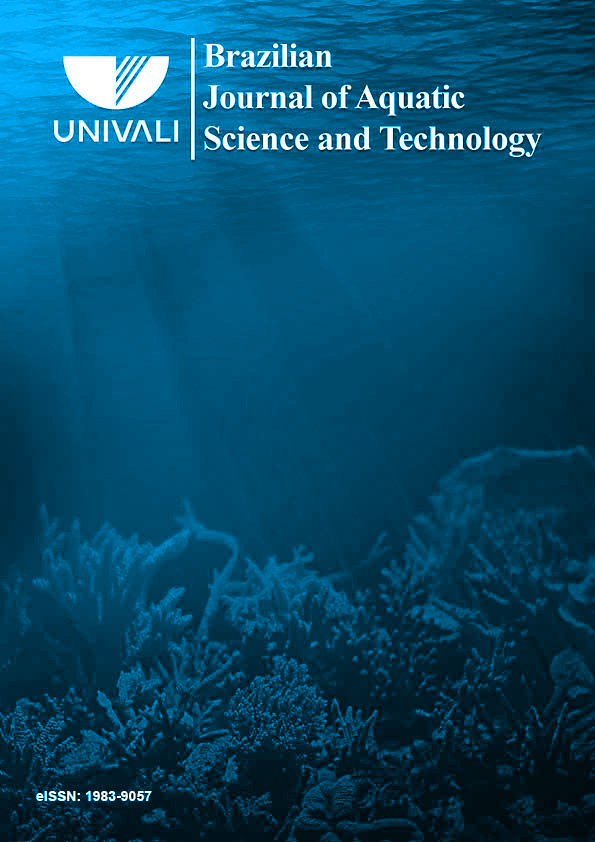FRUGIVORIA POR AVES EM Myrsine coriacea ((SW.) R.BR. EX ROEM. & SCHULT.) (PRIMULACEAE) E SEU USO POTENCIAL EM PROJETOS DE RESTAURAÇÃO
DOI:
https://doi.org/10.14210/bjast.v25n1.16682Abstract
Frugivory by birds Myrsine coriacea ((Sw.) R.Br. ex Roem. & Schult.) (Primulaceae) and their potential use in restoration projects Frugivory and seed dispersal studies are fundamental to comprehend the reproductive biology of plants. The aim of this work was to identify the species of birds that interact with M. coriacea, identifying its potentials dispersal vectors and assessing the use of this plant on ecological restoration programs. The observations were conducted on forest edges at Serra do Itajaí National Park, in two different moments with complementary methodologies. In the first period between June 2001 and 2002 it was adopted the hour-plant (tree-focal) as observation unit, with 15 plants selected for quantitative records, distributed throughout the day and totalizing 21 hours of observation. In the second period, from January 2013 to August 2015, it was adopted the feeding-bouts method on existing tracks. Considering both methods, 31 bird species were registered. Among them stand out in the focal method the species Turdus rufiventris (Vieillot, 1818), T. amaurochalinus (Cabanis, 1850) e T. abicollis (Vieillot, 1818), which in short visits ingested entire fruits, just as Tangara desmaresti (Vieillot, 1819) and Chiroxiphia caudata(Shaw & Nodder, 1793), forest species that promote the flow of seeds from more advanced stages of succession to areas under restoration. These aspects, associated with an abundant fructification and a fast shadowing, authorize their employment on ecological restoration projects.
Downloads
Published
Issue
Section
License
Authors who publish with this journal agree to the following terms:
1. Authors retain copyright and grant the journal right of first publication with the work simultaneously licensed under a Creative Commons Attribution License that allows others to share the work with an acknowledgement of the work's authorship and initial publication in this journal.
2. Authors are able to enter into separate, additional contractual arrangements for the non-exclusive distribution of the journal's published version of the work (e.g., post it to an institutional repository or publish it in a book), with an acknowledgement of its initial publication in this journal.
3. Authors are permitted and encouraged to post their work online (e.g., in institutional repositories or on their website) prior to and during the submission process, as it can lead to productive exchanges, as well as earlier and greater citation of published work (See The Effect of Open Access).

